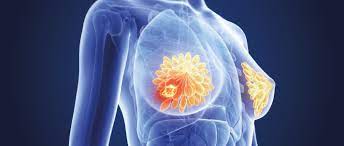February 5, 2024
In a significant leap forward for molecular biology, researchers from the Helmholtz Institute for RNA-based Infection Research (HIRI) in Würzburg and the Broad Institute of MIT and Harvard in the US have pioneered a groundbreaking tool to globally map direct interactions of individual RNA regions without the need for genetic modification. Their findings, recently published in the journal Nucleic Acids Research, offer new insights into the interplay between RNA and proteins, particularly in the context of viral infections.
The study, led by Mathias Munschauer of HIRI, highlights the critical role of RNA-protein interactions in maintaining cellular homeostasis and in the ongoing battle between viruses and host cells. Viruses, including the notorious SARS-CoV-2, exploit regulatory RNA elements to recruit proteins and execute their gene expression programs, allowing the production of viral progeny.
The breakthrough tool, named SHIFTR (Specificity Highlighting for Individual RNA Targets), provides an unparalleled capability to discover interactions for specific regions within a target RNA molecule. Using mass spectrometry, SHIFTR enables the unbiased and comprehensive mapping of proteins interacting with a specific RNA sequence in living cells, all without the need for genetic modification.
Munschauer emphasizes the significance of SHIFTR, stating, “Until now, it has not been possible to study the interplay between proteins and individual RNA regions in live cells without genetic manipulation. SHIFTR finally delivers this and is easy to execute, highly scalable, and cost-effective.”
Jens Aydin, a PhD student in Munschauer’s research group and the first author of the study, notes, “With this new tool, we can determine the interactions for practically every cellular RNA and every regulatory element within these RNAs. This can fundamentally change the way we look at RNA in the cell — a crucial milestone.”
The researchers applied SHIFTR to explore the replication process of SARS-CoV-2, uncovering previously unknown interactions between different sequence regions within the viral RNA. The study focused on the 5′ and 3′ terminal regions containing untranslated regulatory elements crucial for controlling protein synthesis, RNA stability, and viral genome replication.
These findings not only deepen our understanding of the viral replication process but also open avenues for innovative antiviral therapies by identifying new protein targets. The research team believes that SHIFTR can further be leveraged to explore cellular transcriptomes in health and disease, uncovering regulatory interdependencies and potential drug targets.
Furthermore, the tool has promising applications in characterizing how RNA-based therapeutics, including mRNA vaccines, interact with the regulatory machinery of target cells. This insight could inspire efforts to design optimized RNA-based drugs, paving the way for enhanced therapeutic interventions.
The study received support from the Helmholtz Young Investigator Group Program, the European Research Council (ERC), and the FOR-COVID Research Network, with additional funding for Nora Schmidt through the EMBO Long-Term Fellowship Program. The Helmholtz Association provided funding for the open access charge.











